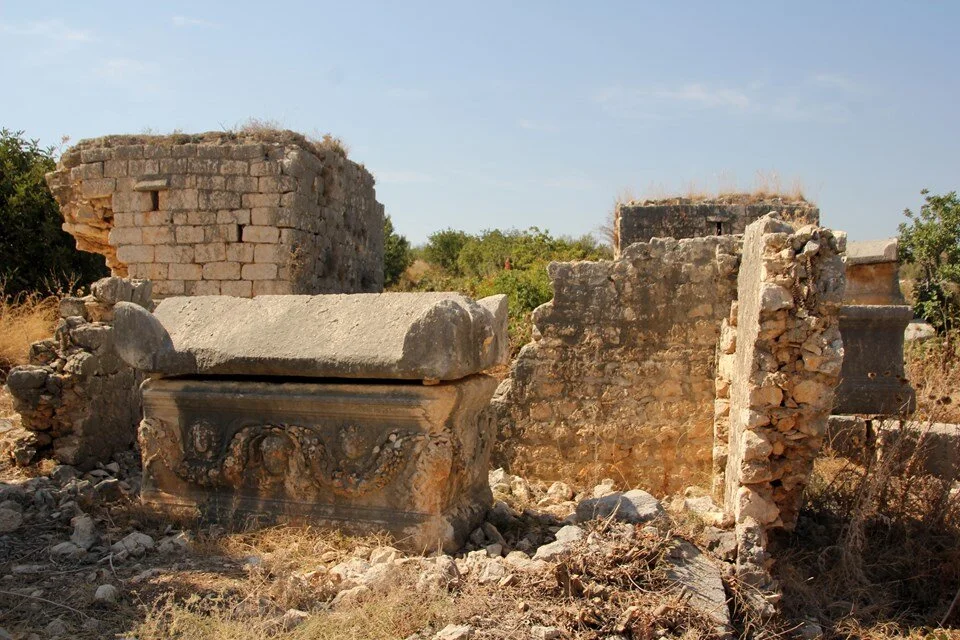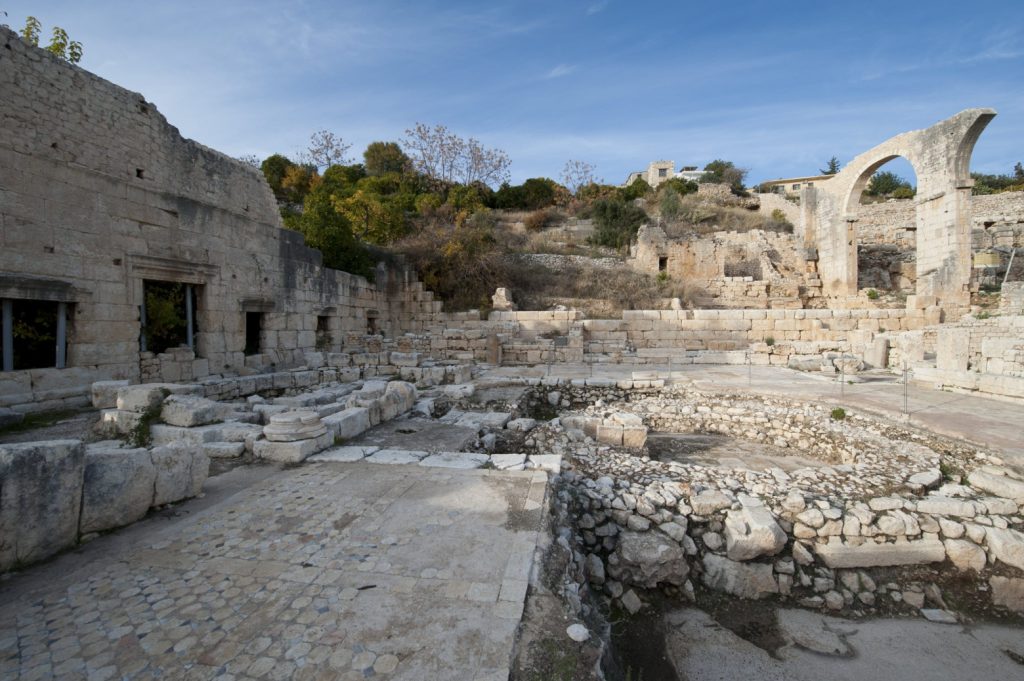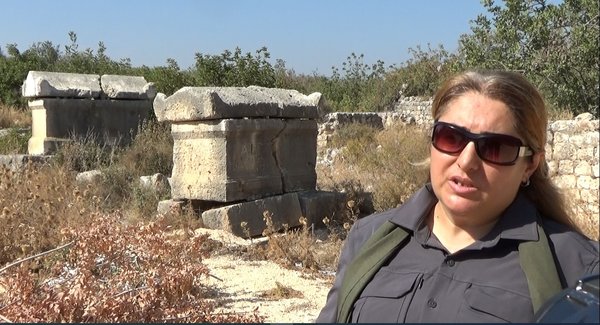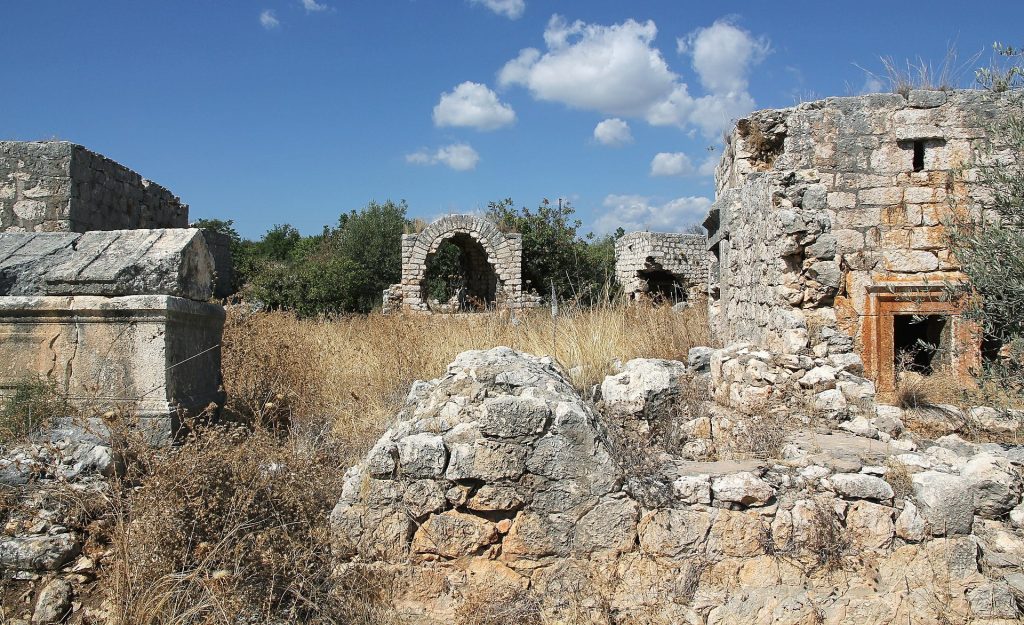
Elaiussa Sebaste Ancient City’s necropolis area will be open for visitation
Documentation work, including three-dimensional data, has begun for the purpose of opening the Roman Road and North Necropolis of Elaiussa Sebaste Ancient City to tourism and for environmental planning.
Elaiussa Sebaste Ancient City, which dates back to the Hellenistic period, is located in the Sırtkaya region of Erdemli district in Mersin province, Türkiye.
“Elaiussa (Ελαιούσα),” derived from the Greek word “elaion” (ἔλαιον), which means “olive oil.” The name Elaiussa is thought to be associated with olive oil production or olive trees in the region.

Excavations in the Elaiussa Sebaste Ancient City continue with a team of 15 people under the scientific supervision of Kastamonu University, Faculty of Humanities and Social Sciences, Department of Archeology, Associate Professor H. Asena Kızılarslanoğlu.

Kızılarslanoğlu stated that the necropolis is one of the largest collective burial sites in the Cilicia region and that it was used during the Late Byzantine period as well. She mentioned, “Preparations for landscaping have begun with the aim of opening the necropolis, which contains graves of different typologies, to tourism. We are currently in the project planning phase, and preliminary preparations are underway.”
Kızılarslanoğlu pointed out that the North Necropolis of Elaiussa Sebaste ancient city is one of the largest necropolises in the Cilicia region. She stated, “Excavations in the North Necropolis of the ancient city have been completed. This necropolis is one of the largest in the Cilicia region.”
Kızılarslanoğlu emphasized that the necropolis, which was built during the Roman period, was also used during the Late Byzantine period, and added, “The tombs in the necropolis were generally family tombs that were used multiple times. They vary in terms of type, including sarcophagi, kamassorium, and chamber tombs, depending on the economic class of the individuals. This is one of the largest necropolises in the Cilicia region, and many tombs have been well-preserved. Because it contains a variety of tomb types, it has great potential for tourism and will contribute significantly to the promotion of Mersin. Visitors exploring this area with the prepared digital data will also see how significant the city’s population and economic status were.”

Kızılarslanoğlu also mentioned that there are two monumental tomb structures in the necropolis, which they believe might have belonged to individuals with better economic conditions or those in administrative positions during that era. She stated, “The temple-type tombs also hold significant importance in the region.” Kızılarslanoğlu added that the project for opening the North Road and Necropolis of Elaiussa Sebaste ancient city to tourism in the Ayaş region will be presented to the relevant ministry and institutions.
You may also like
- A 1700-year-old statue of Pan unearthed during the excavations at Polyeuktos in İstanbul
- The granary was found in the ancient city of Sebaste, founded by the first Roman emperor Augustus
- Donalar Kale Kapı Rock Tomb or Donalar Rock Tomb
- Theater emerges as works continue in ancient city of Perinthos
- Urartian King Argishti’s bronze shield revealed the name of an unknown country
- The religious center of Lycia, the ancient city of Letoon
- Who were the Luwians?
- A new study brings a fresh perspective on the Anatolian origin of the Indo-European languages
- Perhaps the oldest thermal treatment center in the world, which has been in continuous use for 2000 years -Basilica Therma Roman Bath or King’s Daughter-
- The largest synagogue of the ancient world, located in the ancient city of Sardis, is being restored











Leave a Reply